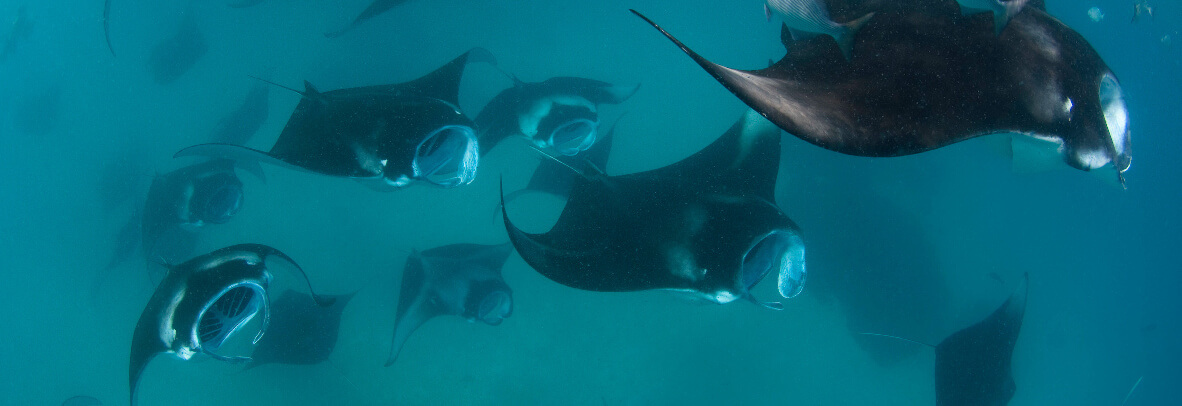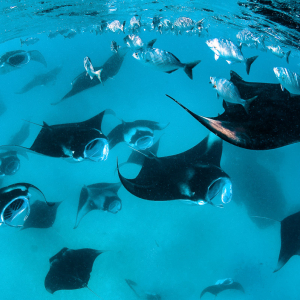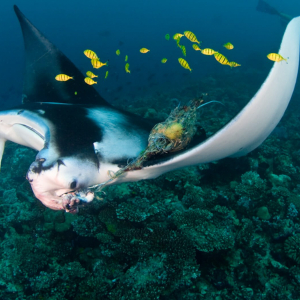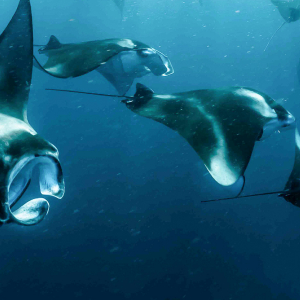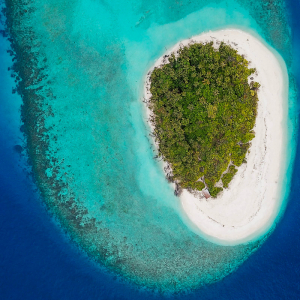Overview
Conservation Organisation: Manta Trust
Project Founder: Guy Stevens
Project Leader: Niv Froman
Project Managers: Beth Taylor (Laamu Atoll), Nicola Bassett (Ari Atoll)
Assistant Managers: Adam Thol’hath
Education & Research Officers: Ibrahim Lirar (Education), Annie Murray (Research)
Research Objectives:
- Estimate Population Size and Structure
- Define Migration Patterns
- Investigate Reproductive Strategies
- Assess Natural and Anthropogenic Threats
Project Start Date: October 2005
Why is this important:
The huge abundance and diversity of marine life in the Maldives makes it one of the top dive and snorkel destinations in the world. At the top of most of these tourists’ ‘must see’ lists are the mantas. These charismatic animals are therefore extremely important to tourism in the Maldives, which is by far the largest source of revenue for the country. However, despite this, manta rays are not yet specifically protected by Maldivian Law and as is the case with many natural resources, they continue to be stretched in this developing nation. The negative associated impacts of this tourism are increasingly affecting the manta population and their habitat.
Project Overview:
The Republic of Maldives has a massive population of Reef Manta Rays (Manta alfredi). It is estimated that the total population for this small country in the middle of the Indian Ocean is likely to number around 5,000 individuals. After seven years of data collection, the MMRP has already identified over 3,000 different mantas with new individuals being sighted on a regular basis.
This population of Maldivian mantas are year round residents, migrating across the country’s 26 atolls with the changing monsoons as they follow the seasonal shifts in the abundance of their planktonic food. These nutrient rich waters support huge quantities of marine life and it’s not uncommon to find over 100 manta rays feeding in the shallow surface waters together with several whale sharks at one of the project’s key study sites: Hanifaru Bay. These amazing feeding aggregations are unique to the Maldives and are one of the world’s most spectacular natural underwater events, attracting increasing numbers of tourists to the Maldives, and to this site in particular, each year. The MMRP and the Manta Trust are working hard with local stake holders and the Maldivian government to put in place conservation and management plans which will protect and preserve this and other manta aggregation sites in the Maldives for the future benefit of all, forever.
One of the ways the MMRP has been able to learn more about the resident population of manta rays has been to establish a method of recognising and recording individuals. Using photographic and video identification the project has built a comprehensive database of over 25,000 sightings within the Maldives. This data is already allowing the project to highlight trends in the mantas’ behaviour, estimate the population size, plot reproductive patterns and track their movements spatially and temporally. The project aims to continue to expand the database over the coming years.
While the photo-ID databases are a simple and very useful tool for researching manta rays, they do have limitations. They can only tell the researchers where the manta is at the time of the sighting, relying on chance re-encounters which make it hard to gather consistent large (100’s miles) and fine (10’s miles) scale movements of individuals. To collect this kind of data the project has used tagging between 2006 and 2009, both passive and active acoustic tagging, as well as state of the art satellite tagging.
Documenting the mating behaviour and reproductive cycle of the resident mantas is another important area of research for the project. Courtship rituals and pregnancies are regularly documented in the Maldives and actual matings have been recorded on several occasions. Furthermore, mating occurs at distinct times of the year at specific locations in the Maldives and it is possible to follow the mating and pregnancies of individuals within the population from one year to the next. This work is extremely important because very little is known about the reproductive strategies of manta rays, not just in the Maldives, but globally.
Main Objectives:
- Continue the ongoing program of monitoring the numbers and identities of individually recognizable reef manta rays in the Maldives.
- Assess and compare the apparent range of movement patterns exhibited by the individually recognized reef manta rays.
- Record any signs of reproductive activity among reef mantas at the key study areas, or any other site in the Maldives, including any indications of courtship or mating behavior and the appearance of pregnancy or mating scars in female mantas.
- Estimate the growth rates of juvenile and sub-adult mantas, coupled with data from objective number 3. to to ascertain the age at maturity of the mantas.
- Monitor any threats to the reef manta population and their habitat by monitoring tourism activities at key manta aggregation sites and recording incidences of targeted or accidental injury.
- Continue to record the extent to which tourists appear to alter the behavior of the mantas, or impact their welfare and the extent to which guidelines for wildlife tourism are being observed or neglected.
- To push for the implementation of national protective legislation for manta rays and their key aggregation sites within the Maldives.
Achievements:
- Global awareness of the project’s work through the National Geographic Magazine & multiple television documentaries.
- The designation in 2009 of Hanifaru Bay and Anga Faru, two of the project’s key study sites, as Marine Protected Areas (MPAs).
- The designation of Baa Atoll, where the MMRP’s key study area is situated, as a UNESCO World Biosphere Reserve in 2011.
- The addition of all ray species in the Maldives to the national Protected Species List in 2014, including manta and mobula rays.
